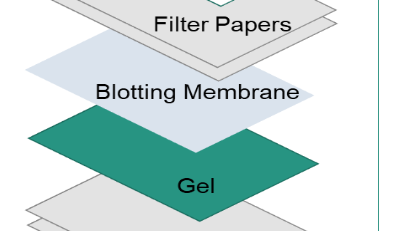Western Blotting: Nitrocellulose Vs Polyvinylidene Difluoride (PVDF)
With regards to Western blotting, most specialists incline toward polyvinylidene difluoride (PVDF) and nitrocellulose over different kinds of films since the two offers a few key characteristics that make them appropriate for specific test conditions. How can one contrast and the other? What’s more, how would you pick which one to use in your application? To do this, you have to take the layer compose; pore size and film organize into thought to enable you to pick which layer to utilize.
Protein restricting limit PVDF has a protein restricting limit of 170 to 200 μg/cm2 while nitrocellulose has a protein restricting limit of 80 to 100 μg/cm2. Since PVDF has a higher protein restricting limit, it likewise offers higher affect-ability. While this element enables it to identify humble communicated proteins, you will probably get higher foundation noise in your immune response recognition steps when utilizing this film. Nitrocellulose layer, then again, may not be equipped for the location affect-ability of PVDF films however it will create a lower noise.
Restricting collaborations Protein atoms tie to nitrocellulose layers through hydrophobic associations while particles tie to PVDF layers through hydrophobic and dipole communications. In any case, it would be ideal if you take note of that nitrocellulose requires the utilization of methanol in the exchange cushion which may lessen the pore size of the gel and make high sub-atomic weight proteins hasten.
Physical attributes. While nitrocellulose is weak and delicate, PVDF is more solid and has higher substance opposition making it perfect for reprobing and sequencing applications. Nitrocellulose can turn out to be hard to strip and reprobe without losing signal. Be that as it may, bolstered variants of nitrocellulose films are significantly more solid and versatile than standard nitrocellulose layers so they can be stripped, reprobe, and subjected to cruel compound medicines.
Pore estimate – The two layers come in ordinary pore sizes of 0.1, 0.2 or 0.45μm. The 0.45μm layer is reasonable for most protein smearing applications however for littler peptides or lower atomic weight proteins (under 15 kD), you should utilize 0.1 or 0.2μm pore measure film.
Note: When you are recognizing a protein stacked at low levels or when measurement is viewed as basic, you ought to dependably pick the littler size layer.
Layer organizes – There are a few factors that you have to consider while picking the most reasonable film arrange, including exchange framework (semi-dry, wet or quick), accommodation, cost and adaptability. Pre-cut and pre-wetted layers are the perfect decision when accommodation, reproducibility and high throughput are of most elevated significance while moves offers greater adaptability since you can slice the film to the particular size of your gel.



Leave a Reply